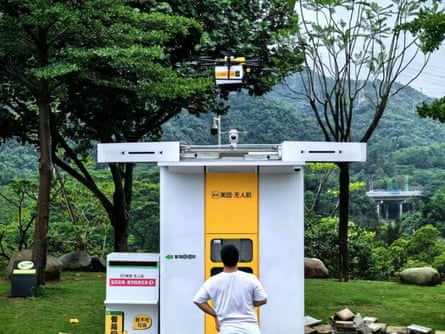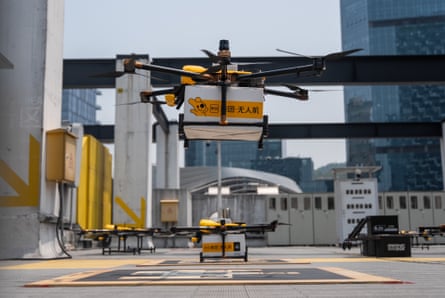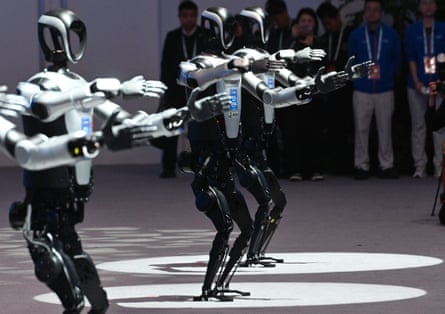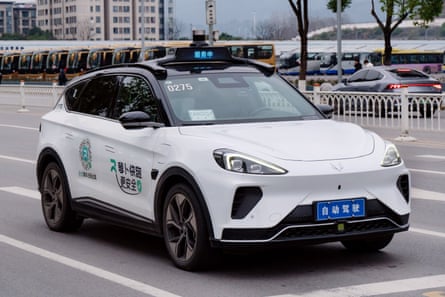China’s ‘Embodied AI’ Revolution: Transforming Daily Life
In Shenzhen’s Central Park, a drone operated by Meituan descends onto an “airdrop cabinet,” delivering food to hungry park-goers without human intervention. This scene illustrates China’s rapid advancement in ’embodied AI’ – the integration of artificial intelligence into physical systems like robots and drones.

China’s leaders see AI as crucial for upgrading military strength, addressing workforce shrinkage, and fostering national pride. The government is doubling down on industries where it can develop ahead of the US, with a particular focus on ’embodied AI.’ Guangdong province, including the tech hub Shenzhen, is at the forefront of this movement, having announced 60m yuan in new funding for innovation centers.
Advancements in Drone Technology
Shenzhen, known as China’s drone capital, has seen significant advancements in drone technology due to progressive regulations. Meituan’s drone delivery system is a prime example, aiming to beat human delivery times by about 10%. The Civil Aviation Administration predicts that the drone sector’s value will increase five-fold to 3.5tn yuan in the next decade.

Humanoid Robots and Their Applications
Humanoid robots are another area of significant development. Unitree’s humanoid robots performed at this year’s Spring Festival gala, watched nearly 17 billion times. The world’s first humanoid vs. human race took place on the outskirts of Beijing, marking a milestone in robotics.

Reinforcement learning has accelerated the development of humanoid robots, allowing them to be trained in months rather than years. Companies like UBTech are already supplying humanoid robots to car factories, addressing China’s shrinking workforce.
Breakthroughs in AI Technology
A significant breakthrough came when DeepSeek, a Chinese firm, released a large language reasoning model, R1, which performs comparably to leading US models at a fraction of the cost. This open-source model has encouraged widespread adoption and benefited the robotics industry.

Challenges and Future Prospects
Despite advancements, challenges persist. AI models require vast amounts of data for training, which is scarce for robotic AI. However, the narrative has shifted in China’s tech industry, with the government backing AI as a path to sustainable growth. Tech entrepreneurs are being welcomed back into favor, and meetings between Xi Jinping and tech bosses have boosted confidence in the sector.

As China continues to invest in AI and robotics, the potential for these technologies to reshape daily life and drive economic growth is vast. While challenges remain, the progress made in ’embodied AI’ positions China at the forefront of a technological revolution.


